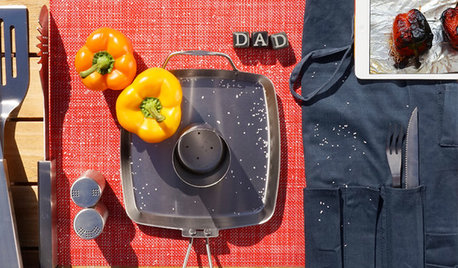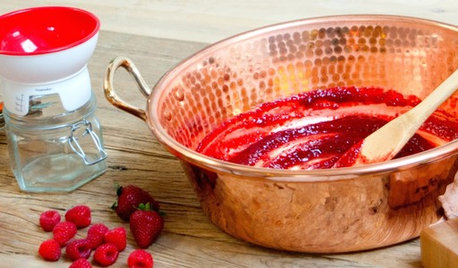Increasing productivity
sue_ct
12 years ago
Related Stories

EXTERIORS17 Ways to Increase Your Home's Curb Appeal
The word on the street? Homes with appealing front views can sell faster, lift moods and convey a warm welcome
Full Story
HOME OFFICES6 Ways to Define Your Workspace at Home
Stake out your office territory even without walls and watch your productivity and creativity increase
Full Story
KITCHEN DESIGNKitchen Watch: Trends, Products and Lifestyle Elements
Modern Kitchens Reflect a Desire for Personality, Honest Materials, Healthy Living and Control
Full Story
GARDENING AND LANDSCAPINGGuest Picks: 20 Products to Pretty Up Your Front Porch
Boost your home's curb appeal with 20 products to add oomph to your front door and porch
Full Story
SHOP HOUZZHouzz Products: Great Gifts for Dad
Father’s Day is June 15! Make Dad feel like the king of his castle with one of these gifts from the Houzz Products section
Full Story
SHOP HOUZZHouzz Products: Pretty in Pastels
Go for a soft rainbow with accessories and furnishings in happy shades
Full Story
SHOP HOUZZHouzz Products: Save a Taste of Summer
Can't bear to part with the flavors of summer peaches, berries and tomatoes? Then jam on it!
Full Story
HOW TO PHOTOGRAPH YOUR HOUSESmall-Business Savvy: Photograph Products Like a Pro
Take impressive photos of your work for a website, a portfolio or packaging with any camera and these 5 tips
Full Story
GREEN DECORATINGBamboo Products — Earth Friend or Foe?
The ecofriendliness of this grass for flooring, wall coverings and furniture isn't cut and dried. Get the facts here
Full Story
PRODUCT PICKSGuest Picks: 10 Resolutions for House and Home
Resolve to glam things up, entertain more effortlessly or increase your home's curb appeal in 2012
Full StoryMore Discussions







fusion_power
digdirt2
Related Professionals
Belvedere Park Landscape Contractors · Fishers Landscape Contractors · Forest Hills Landscape Contractors · Lauderdale Lakes Landscape Contractors · Salem General Contractors · Ashtabula General Contractors · Del Aire General Contractors · Kettering General Contractors · Mililani Town General Contractors · Pepper Pike General Contractors · Perrysburg General Contractors · Lauderdale Lakes Decks, Patios & Outdoor Enclosures · Paradise Valley Decks, Patios & Outdoor Enclosures · Urbana Decks, Patios & Outdoor Enclosures · Windsor Decks, Patios & Outdoor Enclosuressue_ctOriginal Author
sue_ctOriginal Author
digdirt2
readheads
carolyn137
sue_ctOriginal Author
barrie2m_(6a, central PA)
sue_ctOriginal Author
sue_ctOriginal Author
barrie2m_(6a, central PA)
sue_ctOriginal Author
hemnancy
sue_ctOriginal Author
hemnancy
sue_ctOriginal Author
Donna
sue_ctOriginal Author
iowaboy
sue_ctOriginal Author
Donna
laccanvas
sue_ctOriginal Author
sandra_zone6
sue_ctOriginal Author
sue_ctOriginal Author
kevinitis
barrie2m_(6a, central PA)
sue_ctOriginal Author
sue_ctOriginal Author
Donna
sue_ctOriginal Author
oliveoyl3
sue_ctOriginal Author
sue_ctOriginal Author